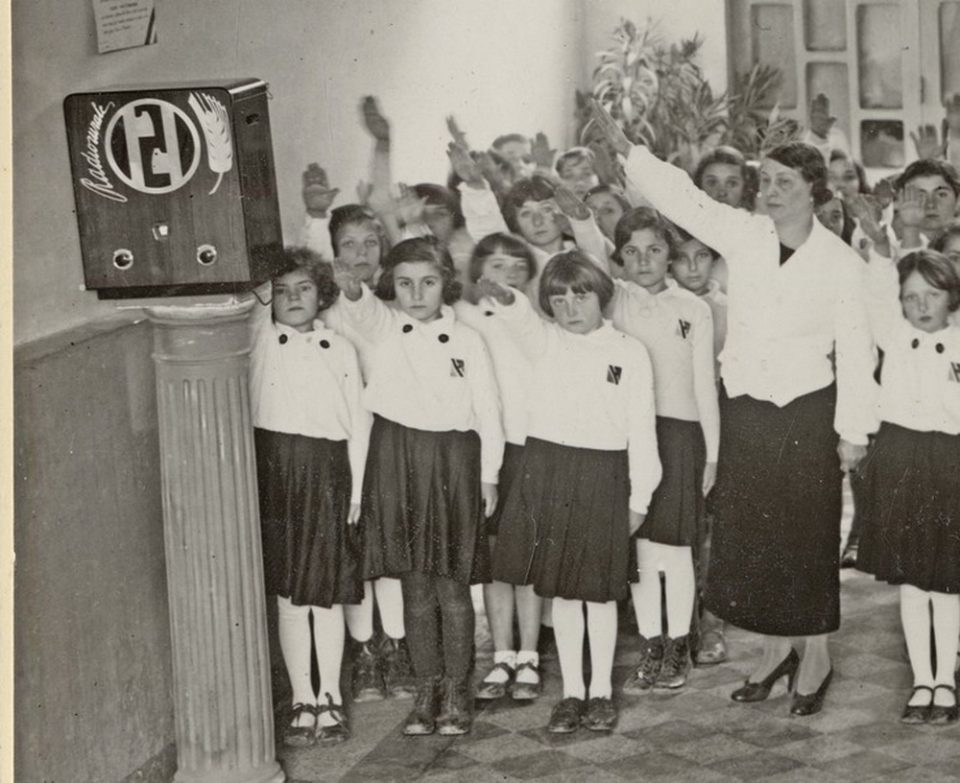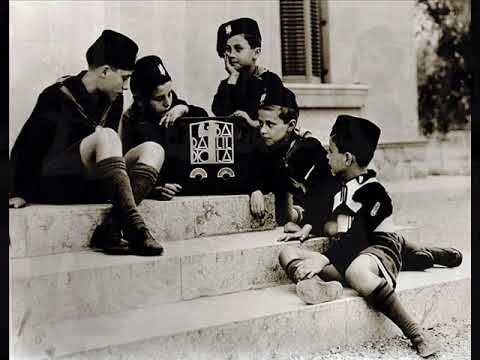

Fascist propaganda was mainly directed at young people. That is why the Opera Nazionale Balilla was established in 1926 to instill in young people the feeling of discipline and military education, making them aware of their Italian-ness and their role as “fascists of tomorrow.” In 1927, the fascist regime dissolved non-fascist youth organizations by law, including the scout associations. The place where propaganda could have the most significant effect was elementary school. Elementary school in the Fascist era was rigorous: every morning before entering school, pupils had to recite a prayer, and if they made mistakes, they were punished severely. Grades were noted in the notebook and started at two. Ratings on hygiene and personal care were also written on the report card. Teachers were to be treated with the utmost respect.
Instead of a backpack, one had a folder made of cardboard, wood, or leather. The wooden pen holder contained only a pen, pencil, eraser, sharpener, a box of crayons, and blotting paper. The classroom was spacious: it included a closet and blackboard; the desks accommodated two pupils; a wood stove heated it.
The school report card also became a propaganda tool of the regime, which used this document to convey the model of a new youth. Other means of propaganda aimed at young people were comic books published by the regime, such as “The Balilla.” With the introduction of radio in schools, the regime sought to find a meeting point between the language of life narrated (by the radio) and the scholastic language received at school, accompanied by a particular choice of music for them to listen to.